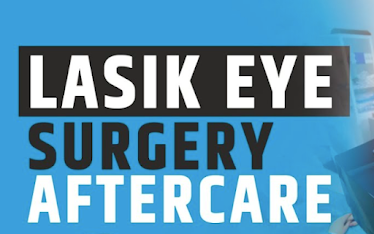Is Lasik okay after 40?
LASIK (Laser-Assisted in Situ Keratomileusis) has long been a popular procedure for vision correction. But once people are 40 and older, they frequently question if LASIK is still a good option. The pros and downsides of LASIK for those in their 40s and older will be covered in detail in this article. We will also investigate alternate vision correction techniques to treat visual alterations brought on by aging.
Understanding Age-Related Visual Changes
Presbyopia, a normal reduction in near vision seen by people when they reach their forties, is typical. It becomes difficult to focus on surrounding things owing to presbyopia caused by decreased eye lens flexibility. Due to this age-related shift, bifocals or reading glasses are frequently required to accommodate both near and far vision.
Presbyopia: Presbyopia is one of the most prevalent age-related visual abnormalities. Presbyopia, brought on by decreased lens flexibility in the eye, usually manifests itself around 40. It reduces the eye's capacity for close-up concentration, making reading, using a smartphone, or using a computer more difficult. Presbyopic people frequently need reading glasses or bifocals to enhance their near vision.
Reduced Accommodation: The eye's capacity to switch between focusing on near and far objects is called accommodation. The muscles regulating accommodation weaken and lose flexibility as people age, making it harder to focus on up-close things. This aids in the progression of presbyopia.
Alterations in Contrast Sensitivity: Aging-related alterations can also impact contrast sensitivity, which is the capacity to tell between objects with minute variations in brightness or color. As people age, their eye lens gets less clear, reducing their ability to detect contrast. As a result, it could be harder to discern between colors that are close in shadow or to see in low light.
Dry Eyes: Ageing can also cause a decrease in tear production and changes to the quality of tears, resulting in dry eyes. Inconvenience, a gritty or burning feeling, hazy vision, and increased light sensitivity are all signs of dry eyes. To improve overall visual comfort and quality, it is crucial to manage dry eye issues.
Increased Risk of Eye Conditions: Age-Related Macular Degeneration (AMD), Cataracts, and Other Eye Problems: As people age, they are more likely to get glaucoma, AMD, and other eye problems. Further treatments or interventions may be necessary for certain disorders, which can also compromise eyesight.
LASIK Options for Presbyopia
The basic goal of LASIK surgery is to correct refractive abnormalities, including astigmatism, farsightedness, and nearsightedness. However, conventional LASIK does not instantly correct presbyopia. However, there are other LASIK options for those over 40 to meet their close-up and distant vision needs:
One eye is corrected for distant vision using monovision LASIK, and the other is treated for close-up vision. The brain can adapt and synthesize the visual information from both eyes using this technique, leading to clear vision up close and at a distance. The monovision LASIK procedure could be a viable choice for people willing to put up with the little loss of depth perception.
The formation of a multifocal cornea is required for either Presby LASIK or Multifocal LASIK, two cutting-edge LASIK techniques that allow for simultaneous correction of near and far vision. Presby LASIK creates several focal points on the cornea to provide crisp vision at various distances. Those who desire to rely less on reading glasses or contact lenses could consider this option.
Alternative Options for Presbyopia
Apart from LASIK, several alternative vision correction options are available for individuals experiencing presbyopia:
Refractive Lens Exchange (RLE): In RLE, an artificial intraocular lens (IOL) replaces the eye's native lens. This method can address presbyopia and refractive problems and is comparable to cataract surgery. RLE is often advised for people with more severe presbyopia or other eye disorders since it offers a long-term treatment but necessitates more extensive surgery than LASIK.
Conductive keratoplasty (CK): CK reshapes the cornea with radiofrequency radiation to enhance near vision. Usually, only one eye is involved in this minimally invasive treatment, which results in monovision. Most people with mild to severe presbyopia can benefit from CK.
Contact lenses: Various contact lenses, such as multifocal or monovision lenses, can treat both nearsightedness and farsightedness. These lenses might temporarily fix those who would rather not wear glasses.
Considerations for LASIK After 40
When considering LASIK after 40, there are several important factors to keep in mind:
Stability of refractive error: The refractive error must be stable before getting LASIK. Only minimal changes to prescriptions for adults in their 40s should have been made in the prior one to two years. Stability ensures that the effects of the LASIK operation will persist.
Comprehensive eye exams are required to ascertain the general health of the eyes, including any underlying conditions like glaucoma or dry eyes. These factors could influence whether LASIK or another vision correction method is the best choice.
Expectations should be realistic; while LASIK might significantly improve farsightedness, it could not do away with the need for reading glasses. If people know the potential outcomes and discuss their expectations with a qualified LASIK surgeon, they may make better judgments.
Consultation with a specialist Surgeon: You must seek out a consultation with a LASIK surgeon who is a specialist in the procedure. After considering each patient's special requirements and preferences, the surgeon will evaluate the specific scenario, review the benefits and drawbacks, and recommend the best course of action for vision correction.
Conclusion
LASIK could be an excellent solution for people over 40 who require vision correction. Presbyopia may not be adequately treated by this treatment, even though monovision LASIK and PresbyLASIK are acceptable alternatives to standard LASIK. Alternative solutions, such as RLE, CK, and contact lenses, provide options for persons who have certain needs or preferences. Speaking with a skilled LASIK surgeon and considering individual factors, such as stability of refractive error, overall eye health, and acceptable expectations, are essential when selecting the best vision correction option beyond the age of 40. With the proper testing and instruction, people may make informed decisions about improving their vision and regaining their independence in their visual abilities.




Comments
Post a Comment